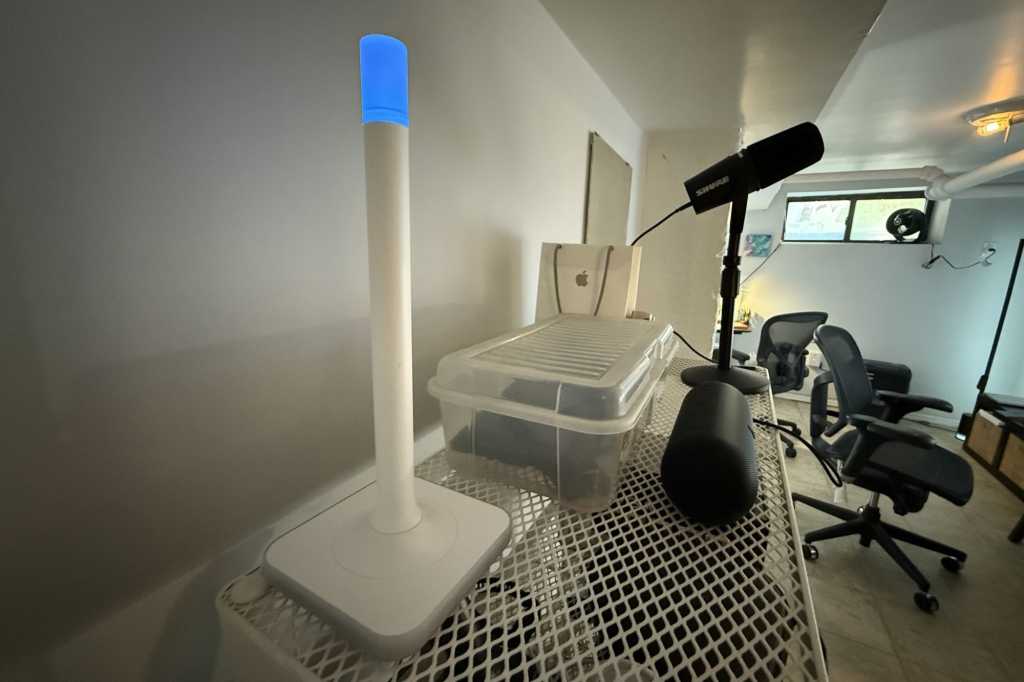I recently described how a recent flurry of smart home failures made me turn to Home Assistant, the increasingly polished DIY smart home platform that you can host yourself without relying on the cloud. Starting today, Home Assistant users have an awesome new toy to play with.
The Home Assistant Connect ZQA-2 ($69) is a new smart home adapter with a very tall antenna. And before you ask, it’s not for Matter, the latest and hottest new thing in smart home. Instead, the Connect ZQA-2 is all about Z-Wave, an older but widely used smart home technology that’s getting renewed attention thanks to its new “Long Range” capability, which allows for connectivity with Z-Wave LR (Long Range) client devices up to a mile—yes, a mile—away.
Home Assistant has long supported Z-Wave, in addition to Zigbee (the smart home standard favored by Phillips Hue) and the aforementioned Matter. (I just added the Matter integration to my own Home Assistant instance.)
But the Connect ZQA-2, which is based on the latest Z-Wave 800-series chipset, is the first Z-Wave adapter built by and for the Home Assistant platform, with the group behind Home Assistant noting that the hardware has been “precisely tuned to Z-Wave’s ideal wavelength.”
For those not familiar with Z-Wave, it’s a radio technology that operates in the sub-1GHz frequency band. This low frequency is ideal for penetrating solid barriers, such as walls, but it also avoids interference from Bluetooth, Wi-Fi, and Zigbee devices that all operate in the 2.4GHz frequency spectrum. More than 4,500 smart devices from the likes of Ring, Leviton, Shelly, Yale, and Vivint offer Z-Wave devices, making Z-Wave a key ingredient in any Home Assistant installation.
Earlier generations of Z-Wave devices utilize a mesh network protocol that can support a maximum of 232 nodes. The newer Z-Wave 800-powered components are backward-compatible, but they can also use the Z-Wave Long Range protocol to operate on a star network that can support up to 4,000 (!) nodes.
Nabu Casa, the commercial arm of the Open Home Foundation under which Home Assistant operates, offered me a sample Connect ZQA-2 for evaluation. While I haven’t had time to give it a formal review (I’ve been playing with the unit for a little less than a week), I can attest that it was easy to install and has—thus far, anyway—worked like a charm.
The Connect ZQA-2 comes in two parts: a 5 x 5-inch plastic base, and a 12-inch antenna with a 1.5-inch LED segment at the top that serves as a status indicator. Assembly is easy: Screw the antenna into the base, use the provided USB-C cable to connect the base to your Home Assistant server (a Raspberry Pi 5 in my case), and that’s pretty much it.
Assembling the Home Assistant Connect ZQA-2 is a simple matter of screwing the foot-long antenna into the 5-by-5-inch base.
Ben Patterson/Foundry
Deciding where to locate the Connect ZQA-2 is a potential issue. Home Assistant advises keeping it away from objects that could cause interference, such as thick brick walls, bodies of water (like fish tanks), other wireless transmitters, and wire mesh or metal fixtures (such as server racks).
I admit, I broke the rule and place the ZQA-2 on top of the wire mesh cabinet that houses my collection of Raspberry Pi boards, but a quick diagnostics check showed that the radio’s performance wasn’t unduly hampered. The antenna’s LED tip will blink yellow to warn you of a “sub-optimal” connection.
The Home Assistant folks also packed in a few Z-Wave devices for me to connect to the ZQA-2, all of which support both the standard Z-Wave protocol as well as Z-Wave LR: a smart plug, a water leak detector, and a smart water valve actuator, all built by Z-Wave device manufacturer Zooz.
Being that I’m an apartment dweller, I wasn’t able to install the smart water valve device, but I did try the smart plug and the water leak detector, which I configured via the Z-Wave JS control panel. (I run Home Assistant in a Docker container, so as a new Z-Wave user, I first had to spin up the Z-Wave integration in a separate container, a process that took all of 20 minutes.)
I didn’t perform formal testing on the connectivity between the two Zooz devices and the ZQA-2, but they worked flawlessly on an anecdotal level. I first connected the water leak sensor via Z-Wave LR and the smart plug with standard Z-Wave, and then swapped the protocols.
Ideally, I’d have done some true long-range testing with the new antenna—a great example might be placing the water leak sensor in a detached shed that’s, say, 100 yards away from the main building. The Z-Wave Long Range protocol supports a theoretical range of one mile, line of sight, so one could certainly dream up some inventive use cases.
The Home Assistant Connect ZQA-2 is available now on the Home Assistant website. I’ll update my findings as I continue testing.

